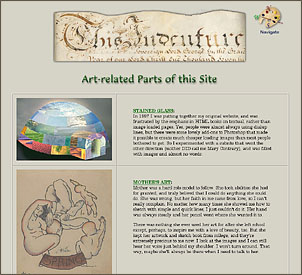THE DEATH OF TWO PRESIDENTS OF THE ROYAL ACADEMY.
This year will probably see three presidents of the Royal Academy, as the election of a successor
to Leighton and Millais is to be held this month. The supply of worthy names is not very large. Most
people would name Watts, Alma Tadema, and Herkomer as the Academy's foremost artists.
Of these three, Mr. Watts is a very old man in precarious health, and the other two are foreigners by birth -
an object more potent in England than it would be with us.
Mr. Orchardson - best known for his "Napoleon on board the Bellerophon" - has declined to be a candidate,
also on the ground of ill health. Luke Fildes and Marcus Stone
are probably the two most likely competitors. Others mentioned for the post are
Briton Riviere, the animal painter; Poynter, who is now at the head
of the National Gallery; and Val Prinsep, who has immortalized various official occasions with canvases remarkable rather for size
than merit.
Some Americans might rise to remark that Sargent, our compatriot - for we continue
to claim him as such - is as good a portrait painter as Fildes, and equally deserving of honor.
He is not in the running, however, for the reason that he is only an associate of the Academy,
and that none but full fledged Academicians are eligible to the presidency. Yet the office has been
held by one American - Benjamin West - and it is not impossible that some day
history may repeat itself.
The coming winter exhibition at the Academy's galleries in Burlington House is likely to consist of works by the two
lately deceased presidents.
CARLYLE AND MILLAIS.
The death of Millais recalled a remark of Thomas Carlyle's, which showed how
utterly a mind of the greatest intellectual force may lack all appreciation of art.
The Chelsea philosopher visited the painter's London house one day, and gazed with
surprise at its rich marbles and hangings,
its ample rooms and wide stairways, and all
its evidences of wealth.
"Has paint done all this?" he bluntly inquired. His host modestly admitted that it had.
"Then," the genial sage resumed, "there must be more fools in the world than I thought."
The gentle Scotchman's standpoint was one of sublime - or perhaps ridiculous - contempt for every one's opinion but his own.
He cared noting for art; ergo, art was worthless, and its
patrons were fools. Fortunately, such dyspeptic self conceit is rare.
STILL THE POSTER.
The poster craze seems to continue on its triumphant way through the civilized world.
It originated in France, traveled to England and America, and now we hear of it in Germany.
A firm in Leipsig, one of the most important of German publishing centers,
last month held a poster competition which attracted still more attention, apparently, than a recent venture of the same
sort in New York. The prizes offered aggregated about a thousand dollars, and entry was
open to designers of any nationality, the awards being decided by a jury of well known German artists.
About the time when the poster fad dies out here it will be heard of from Kamskatka or Timbuctoo.











![]() Copyright © 2007, Mary S. Van Deusen
Copyright © 2007, Mary S. Van Deusen